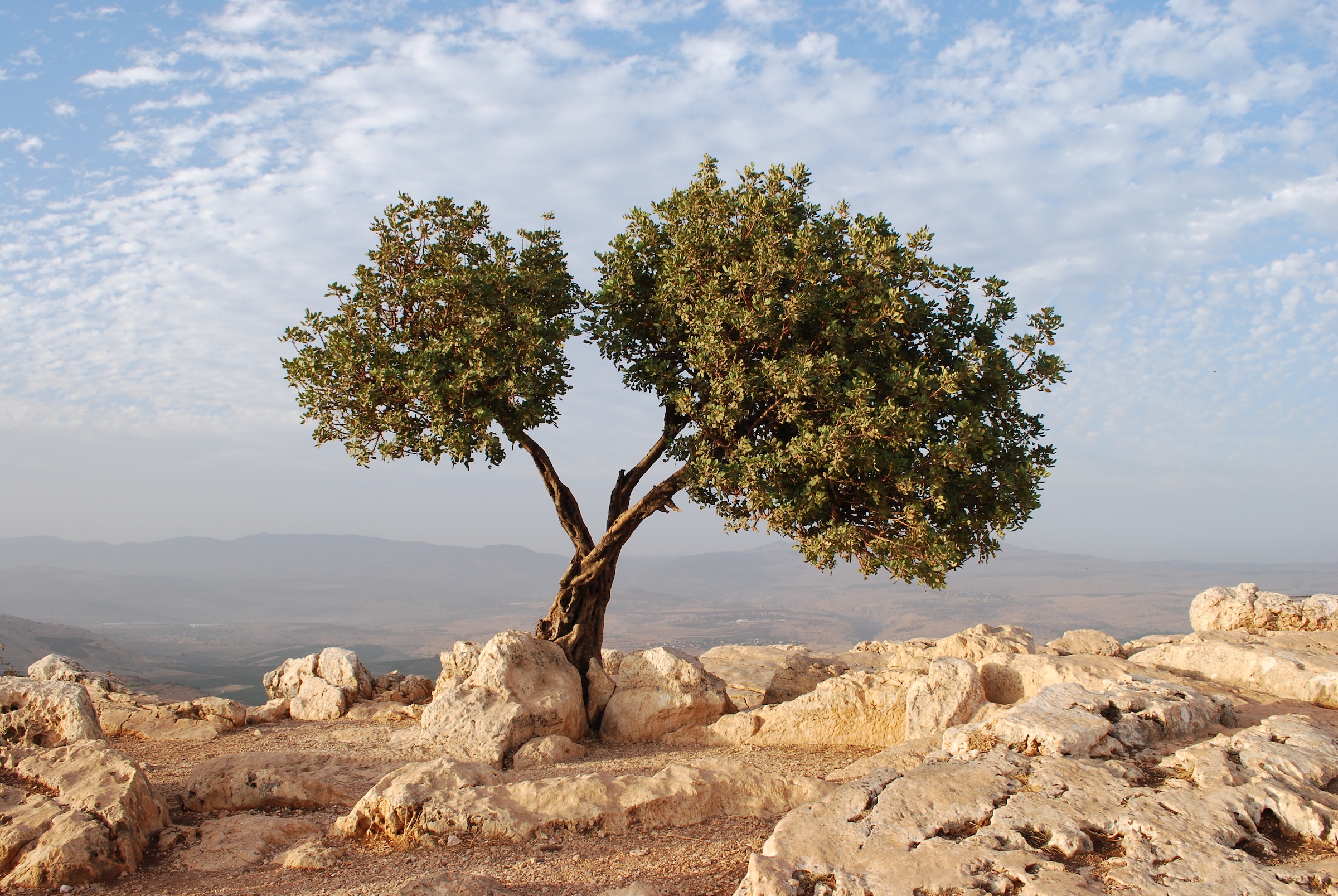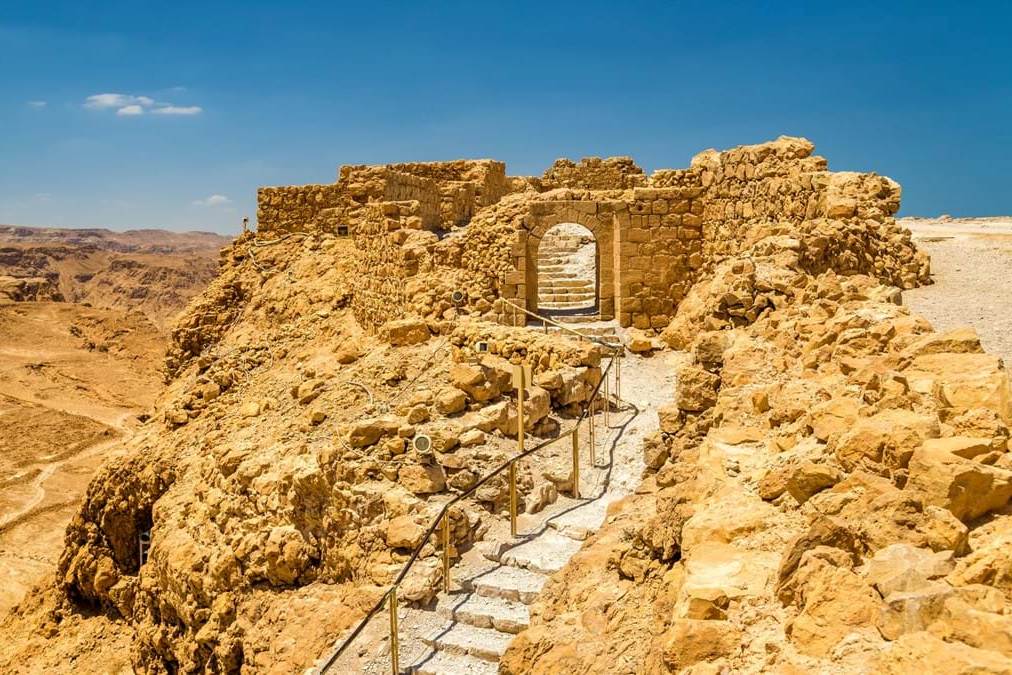Israel: Few Stops at Galilee

... where it is proper to hold your breath and hear history talking. Todaywe speak about the Mount of Beautitudes, Tabgha and Capernaum.
Mount of Beautitudes
Gospel of Matthew mentions a mountain that Jesus Christ ascended to deliver his Sermon on the Mount. To the north of Kinneret Lake an upland speads out that got called the Mount of Beautitudes - because every line in the legendary sermon begins with "Blessed be" - and further as the text goes: "the poor in spirit", "those who mourn", "the meek", " those who hunger and thirst for righteousness ", "the mercyfull,", "the pure in heart", "the peacemakers", "those who are persecuted for righteousness' sake". Photo upload.wikimedia.org
Photo upload.wikimedia.org
For many years historians had been arguing as to which mountain to grant the title "of Beautitudes" to. According to Byzantians, the hill that was called Karnei Hittin (literally- "wheat horns") was meant; catholic encyclopedia sticks to the same version.
In 1930s Franciscan monks established that the Mount of Beautitudes was situated in a different location, not far from the valley of Tabgha. In the course of archeological excavations it turned out that in 4th century a church existed there. A group of churchmen, headed by religious science scholar father Bellarmino Bagatti, decided that there was no better place to build a new church. Photo 1.bp.blogspot.com
Photo 1.bp.blogspot.com
Modern church was erected by 1938 by design of an architect Antonio Barluzzi. By the way, the order on commencement of construction was given by nobody else but future leader of National Fascist Party of Italy Benitto Mussolini. The word is even that a part of the necessary amount of money was allocated by Adolf Hitler. In the process of the church's erection Barluzzi faced a serious obstacle: British authorities considered him the follower of fascist ideology and tried to interfere with the construction. So it took the architect a lot of effort to get Italian marble delivered to destination point.
The chapel that decorates the Mount constitues an octagon - it is no coincidence that the sermon of Jesus Christ mentions eight beautitudes. And stained-glass windows with lines of the sermon inside the church serve as a reminder for everyone who comes to this sacred place.
Tabgha
The valley with Arabic name Tabgha the Israelis honor under Hebrew words "Ein Sheva" that translates as "spring of seven". Now that we mentioned it, the latter one is distinctive for high contents of sulfur. However, Greeks, who had come to the spot, called it "Heptapegon" to emphasize that as many fish as there cannot be found in the entire region of Kinneret Lake.
Alongside natural distinctives, the valley is famous for an exotic construction - the Church of Multiplication of the Loaves and Fish. In its yard, behind the sacred spot, seven fish-shaped taps are located as if to remind about unique springs of these lands. Biblical story has it that it was there where Jesus showed people his miracle - how multitude of people can be satisfied with small amount of food when fed from godly hands. Photo i.ytimg.com
Photo i.ytimg.com
... When the spirit of John the Baptist crossed the Great Divide, he felt like being in solitude to pray for the departed - thus he walked to Tabgha. However people wouldn't leave him alone: the curious attempted talking to him, the sick begged for healing. Jesus spent the whole day listening to lamentations of the suffering: healing, consoling. But by twilight those present got hungry.
In Mark 6 further events are described in the following way: "And when he had taken the five loaves and the two fishes: looking up to heaven, he blessed and broke the loaves and gave the disciples to set before them; and the two fishes he devided among them all. And they all did eat and get their fill. And they took up the leavings, twelve full baskets of fragments and of the fishes. And they that did eat, wre five thousand men..." Photo newmarketholidays.co.uk
Photo newmarketholidays.co.uk
Consiquently, in times of Emperor Constantine the Great's reign - in 350 A.D. - a church was build on this location. Three hundred years later Persian conquerors enroached on the sacred place - and for almost a thousand years the church remained buried beneath layers of ashes. Modern version was reconstructed by efforts of Benedictine Order. The altar was built where a stone lied that served as an improvised dining table in times of Jesus Christ.
Visitors of Tabgha can still behold authentic mosaic floor that almost hasn't lost its shape - only some flagstones have been renovated. Walking around the sacred stone, tourists and pilgrims enjoy the sight of the famous ornamentation that has two fishes and a basket of bread preserved for all posterity as a symbol of abundance.
Capernaum
Capernaum is another ancient city that has had its life going in full swing for twenty five hundred years already. It has prospered since its very foundation - with a quite fortunate location by the border of the state that was headed by King Herod. It has always been populous there - luckily, Capernaum lied on a route of nomands, who carried goods from the Mediterranean to Asia. After Herod's death, when Romans supressed a rebellion of the Jewish people, they didn't touch Capernaum: on the contrary, they turned it into a strategic center by locating a whole legion there. Photo snapshotsofmercy.files.wordpress.com
Photo snapshotsofmercy.files.wordpress.com
Bible, too, allocates a special part to Capernaum: it was there where Jesus found his apostles - John, Jacob, Matthew, Andrew and Simon Peter. In Capernaum the Son of God healed fever in Simon Peter's mother-in-law and a Roman Centurion's servant. It was also there where he followed Yair, a ruler of a synagogue, to resuscitate his dead daughter - and worked a true miracle by making the girl rise from the dead._on_the_shore_of_the_Lake_of_Galilee,_Northern_Israel.jpg) Photo en.wikipedia.org
Photo en.wikipedia.org
Now, what is currently going on? Capernaum joined the list of national parks. There tourists can see remains of the "White Synagogue" there, admire height of its columns and freeze by the writing "The City of Jesus" to open gates humbly and tread sunlit ground.
Cover photo twitter.com





















